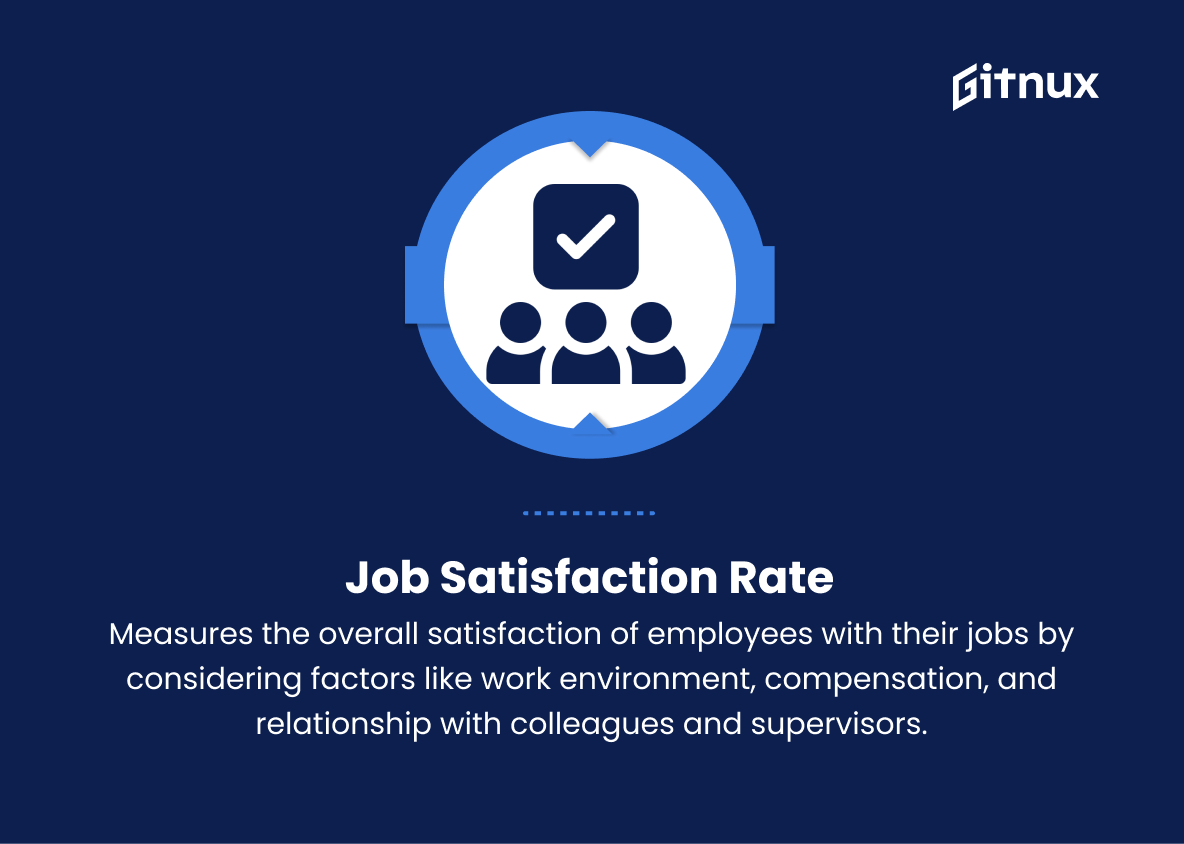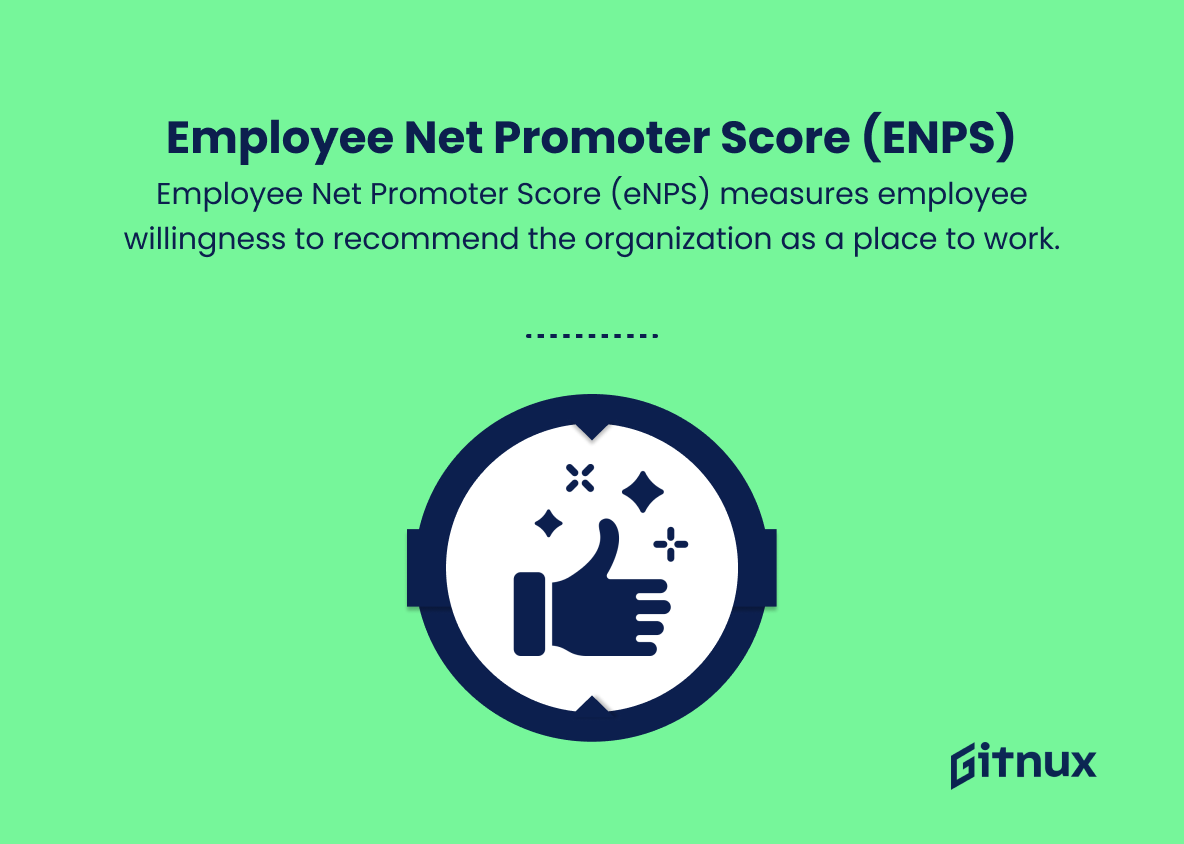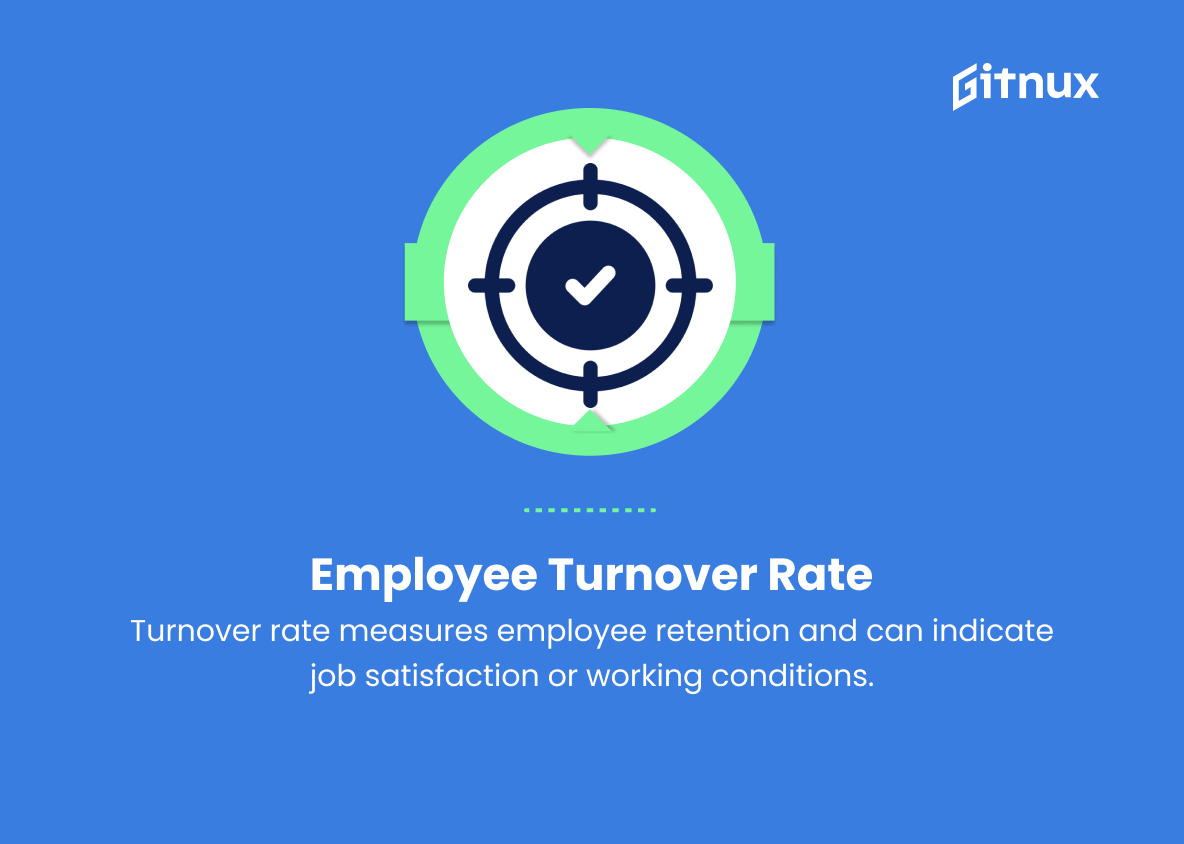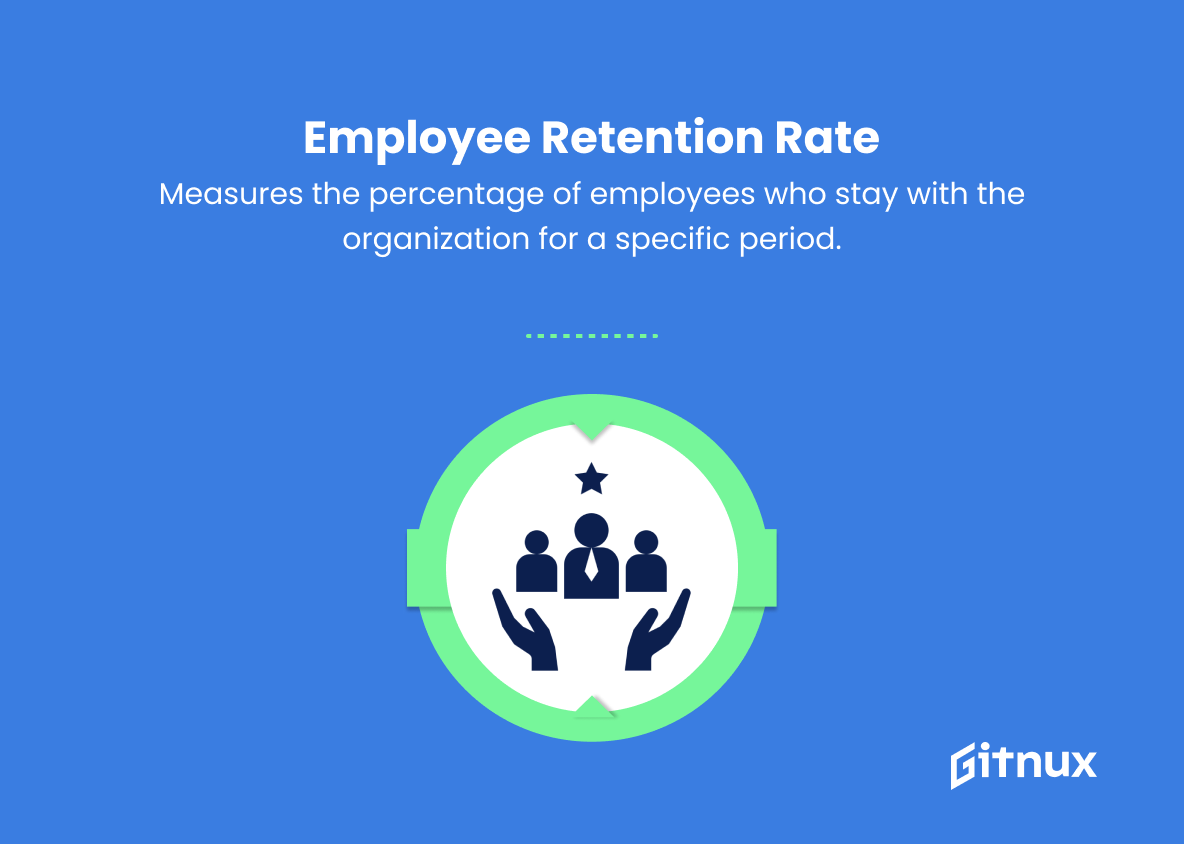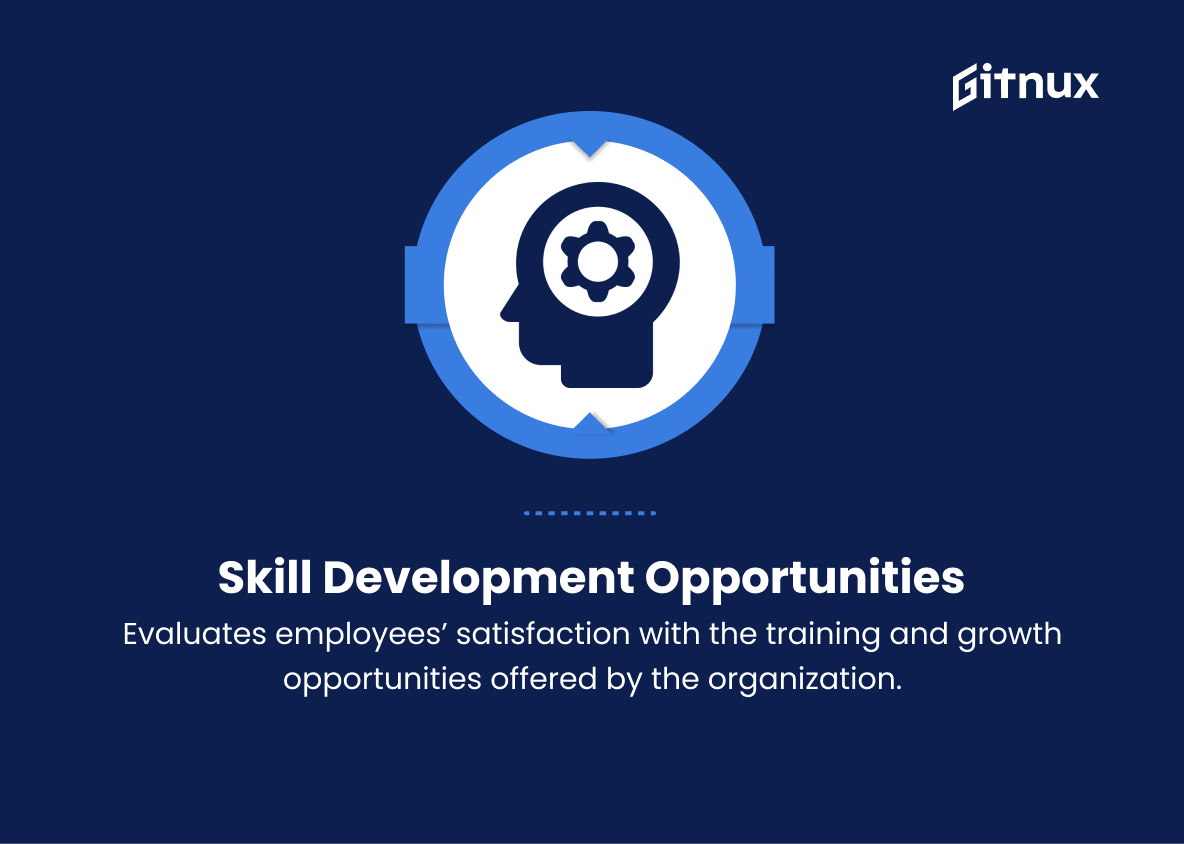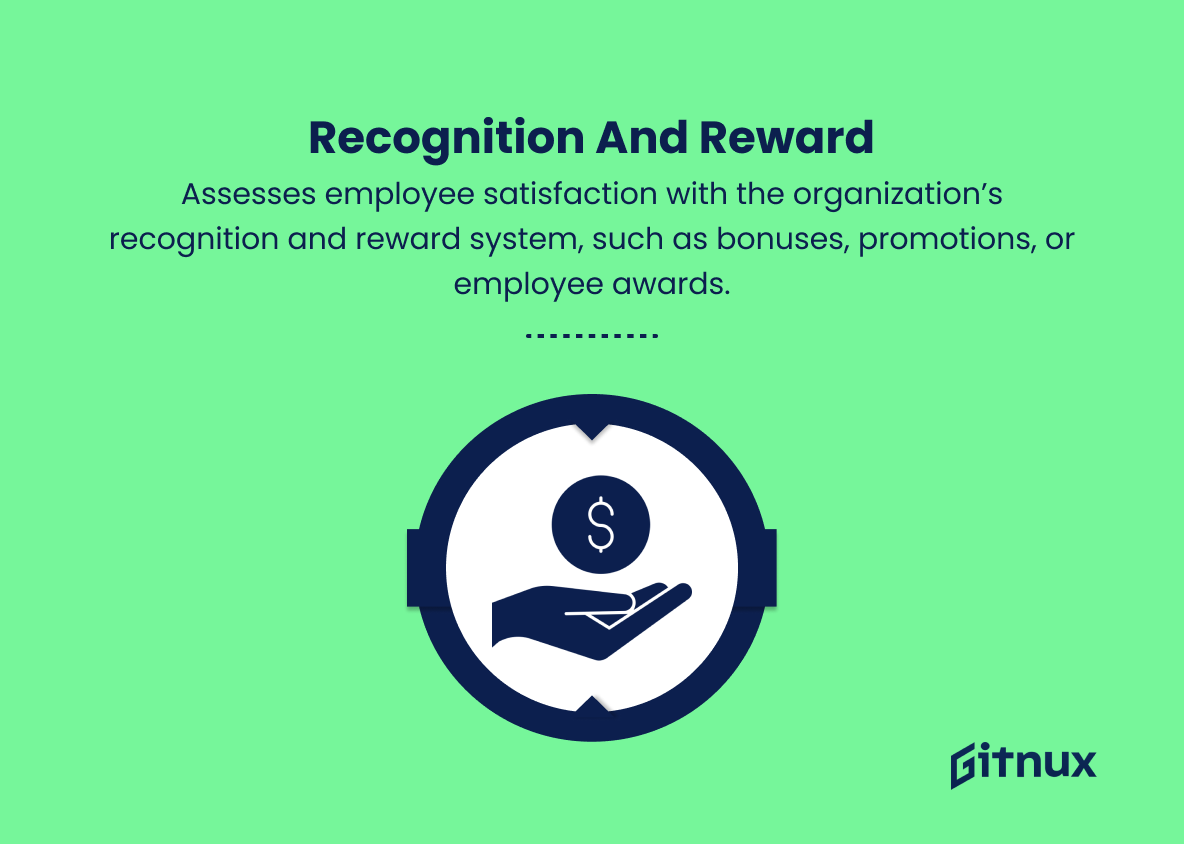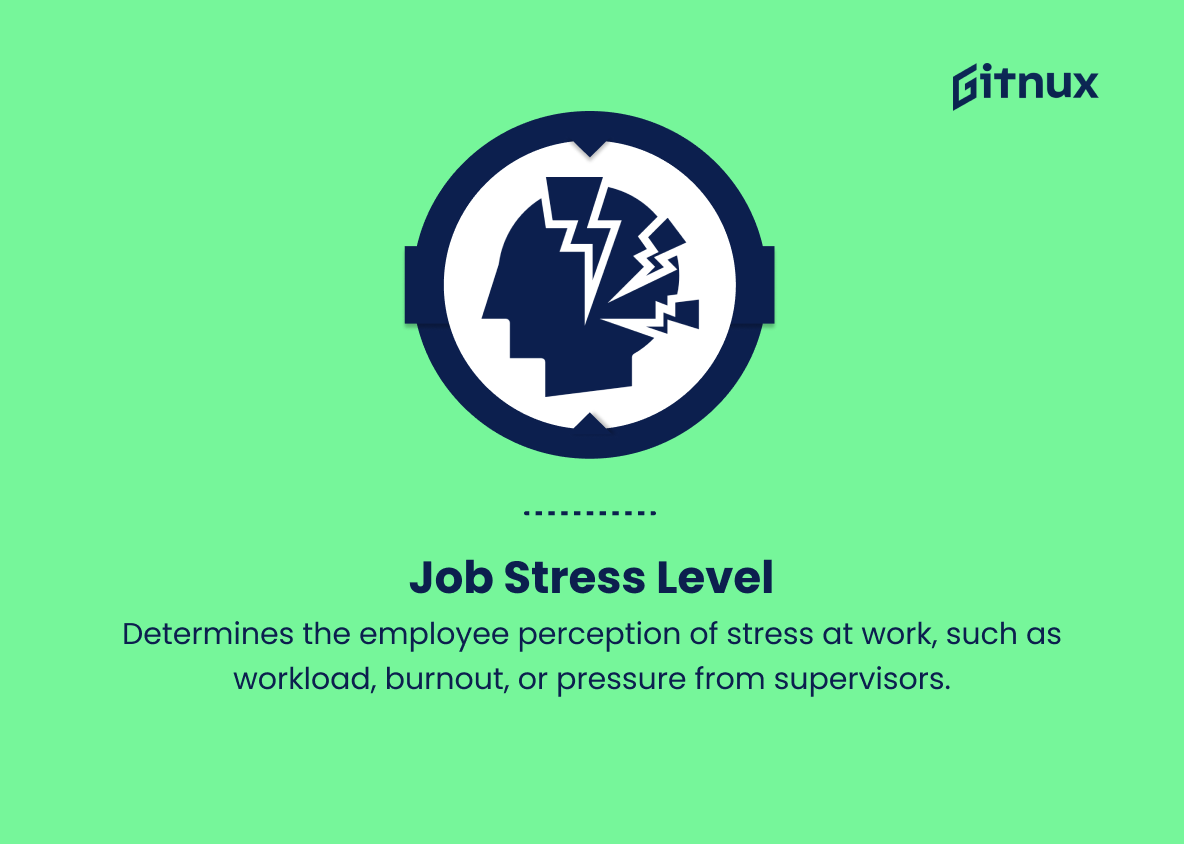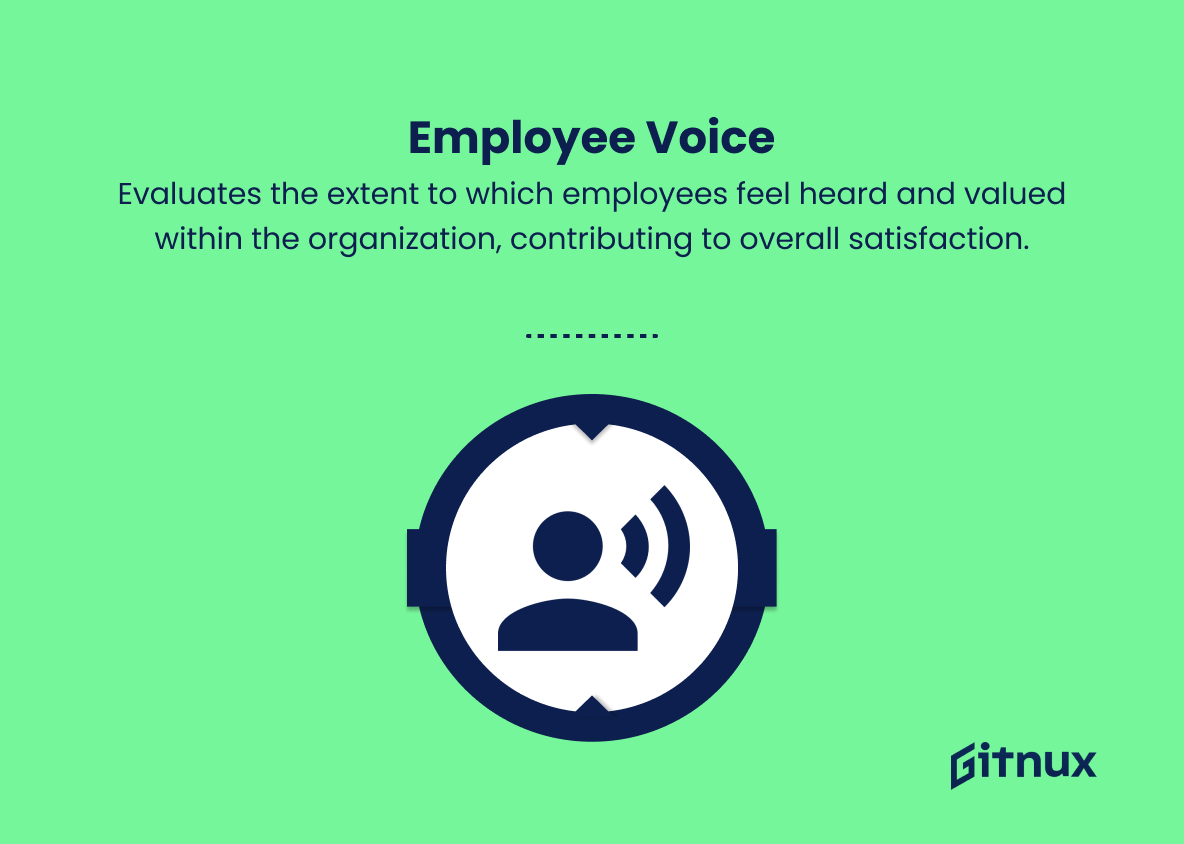In today’s rapidly evolving business landscape, employee satisfaction has emerged as a crucial factor in determining an organization’s overall success and longevity. As industries become increasingly competitive, the importance of retaining top talent and nurturing a motivated workforce cannot be overstated.
In this context, Employee Satisfaction Metrics serve as vital tools for employers who wish to better understand their employees’ experiences, uncover potential areas of improvement, and establish a healthy work environment that fosters growth and productivity. In this blog post, we will delve deep into the significance of these metrics, discuss why they should hold a permanent spot on every manager’s radar, and explore the most effective ways to measure and enhance employee satisfaction within your organization.
Employee Satisfaction Metrics You Should Know
1. Job Satisfaction Rate
Measures the overall satisfaction of employees with their jobs by considering factors like work environment, compensation, and relationship with colleagues and supervisors.
2. Employee Net Promoter Score (eNPS)
Evaluates an employee’s willingness to recommend the organization as a place to work. It is calculated based on employees’ responses to the question, “How likely are you to recommend this company to a friend or colleague?”
3. Employee Turnover Rate
Analyzes the number of employees who leave an organization within a specific period relative to the total number of employees. High turnover may indicate low job satisfaction or inadequate working conditions.
4. Absenteeism Rate
Indicates the amount and frequency of employee absences, reflecting employee disengagement or burnout.
5. Employee Engagement Score
Assesses employees’ commitment, passion, and alignment with the company’s values and goals.
6. Employee Retention Rate
Measures the percentage of employees who stay with the organization for a specific period.
7. Skill Development Opportunities
Evaluates employees’ satisfaction with the training and growth opportunities offered by the organization.
8. Recognition and Reward System Satisfaction
Assesses employee satisfaction with the organization’s recognition and reward system, such as bonuses, promotions, or employee awards.
9. Benefits Satisfaction
Measures employee satisfaction with the company’s benefits, like health insurance, retirement plans, or flexible work arrangements.
10. Work-Life Balance
Evaluates employee satisfaction with the balance between work and personal responsibilities.
11. Job Stress Level
Determines the employee perception of stress at work, such as workload, burnout, or pressure from supervisors.
12. Organizational Culture Fit
Assesses employee alignment with the company’s values, beliefs, and expectations.
13. Supervisor Support
Measures an employee’s satisfaction with their direct supervisor’s support, guidance, and performance feedback.
14. Employee Voice
Evaluates the extent to which employees feel heard and valued within the organization, contributing to overall satisfaction.
15. Team Cohesion
Analyzes employee satisfaction with their team dynamics, collaboration, and relationships.
16. Performance Evaluations Satisfaction
Measures employee satisfaction with the company’s performance evaluation system, such as fairness, frequency, and feedback quality.
17. Job Autonomy
Gauges employee satisfaction with the amount of control they have over their workload, decision-making, and work schedule.
18. Workplace Environment Satisfaction
Assesses an employee’s level of comfort and happiness with the physical workspace and available resources.
These employee satisfaction metrics can provide valuable insights into employee experiences, engagement, and overall satisfaction within the organization. By tracking these metrics and implementing improvements, companies can foster a better work environment enabling employee success and organizational growth.
Employee Satisfaction Metrics Explained
Employee satisfaction metrics are crucial for understanding and improving the overall work experience and engagement of employees within an organization. Metrics like job satisfaction rate, employee net promoter score, and employee turnover rate help companies assess employees’ contentment levels and identify areas of improvement. Additionally, metrics such as absenteeism rate, employee engagement score, and employee retention rate help determine employee commitment and loyalty.
By examining skill development opportunities, recognition and reward system satisfaction, and benefits satisfaction, organizations can better tailor their offerings to employee needs, encouraging work-life balance, and improved job satisfaction. Metrics like job stress level, organizational culture fit, and supervisor support provide insights into potential issues with workload, values alignment, and management support, while employee voice, team cohesion, and performance evaluations satisfaction highlight opportunities to improve communication, collaboration, and performance feedback.
Lastly, job autonomy and workplace environment satisfaction assess the employees’ control over their work and overall workspace experience. By monitoring and addressing these metrics, organizations can create a more positive work environment, fostering employee satisfaction, success, and, ultimately, organizational growth.
Conclusion
In conclusion, employee satisfaction metrics serve as a crucial tool for companies to gauge overall workforce happiness, productivity, and engagement. By consistently measuring and analyzing these metrics, organizations can better understand the needs of their employees and implement targeted, effective strategies to improve workplace conditions.
Both qualitative and quantitative data must be considered to ensure that the efforts undertaken have a lasting and positive impact. In a world where talent retention and business success are inextricably linked, prioritizing employee satisfaction should no longer be an option, but rather – an essential commitment for every business’s long-term sustainability and growth.
